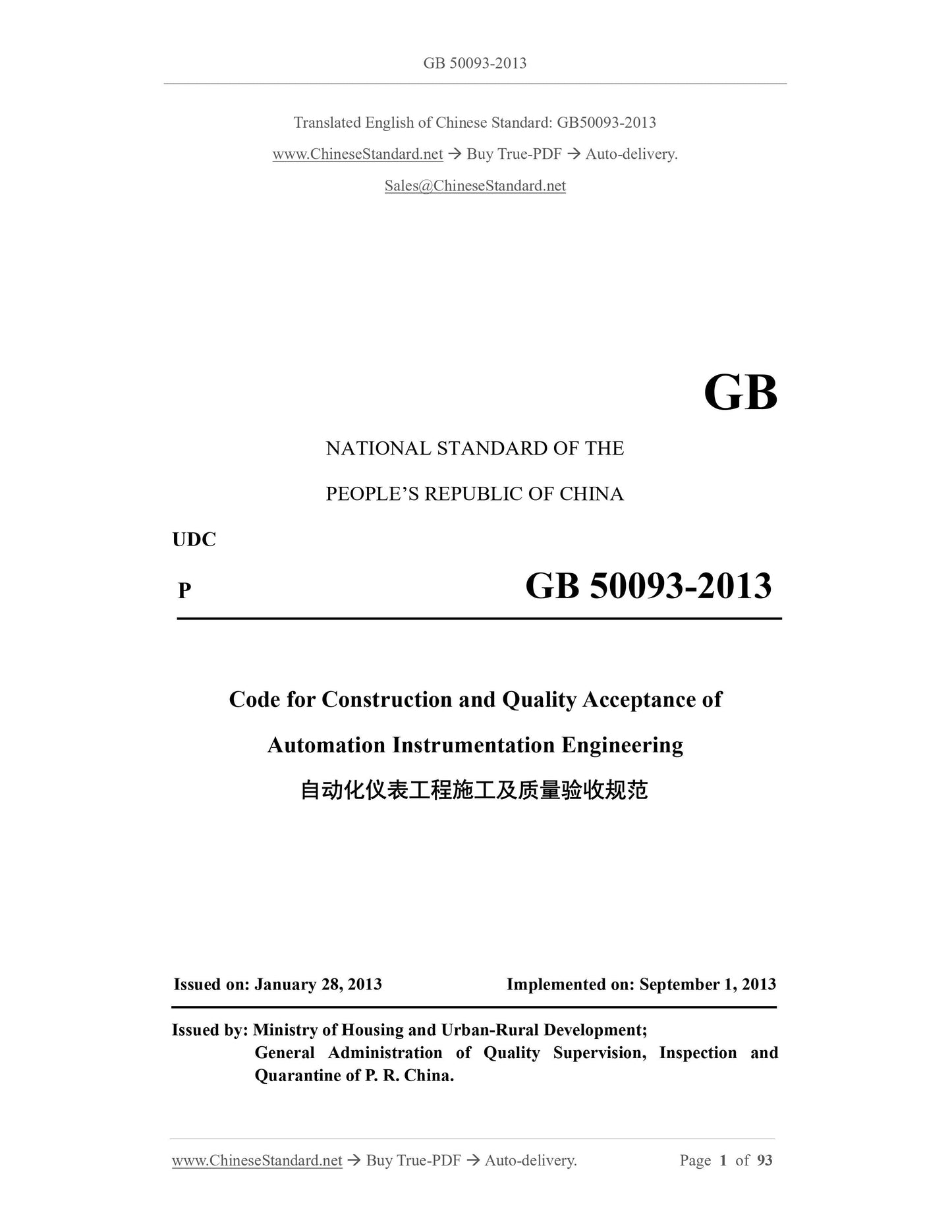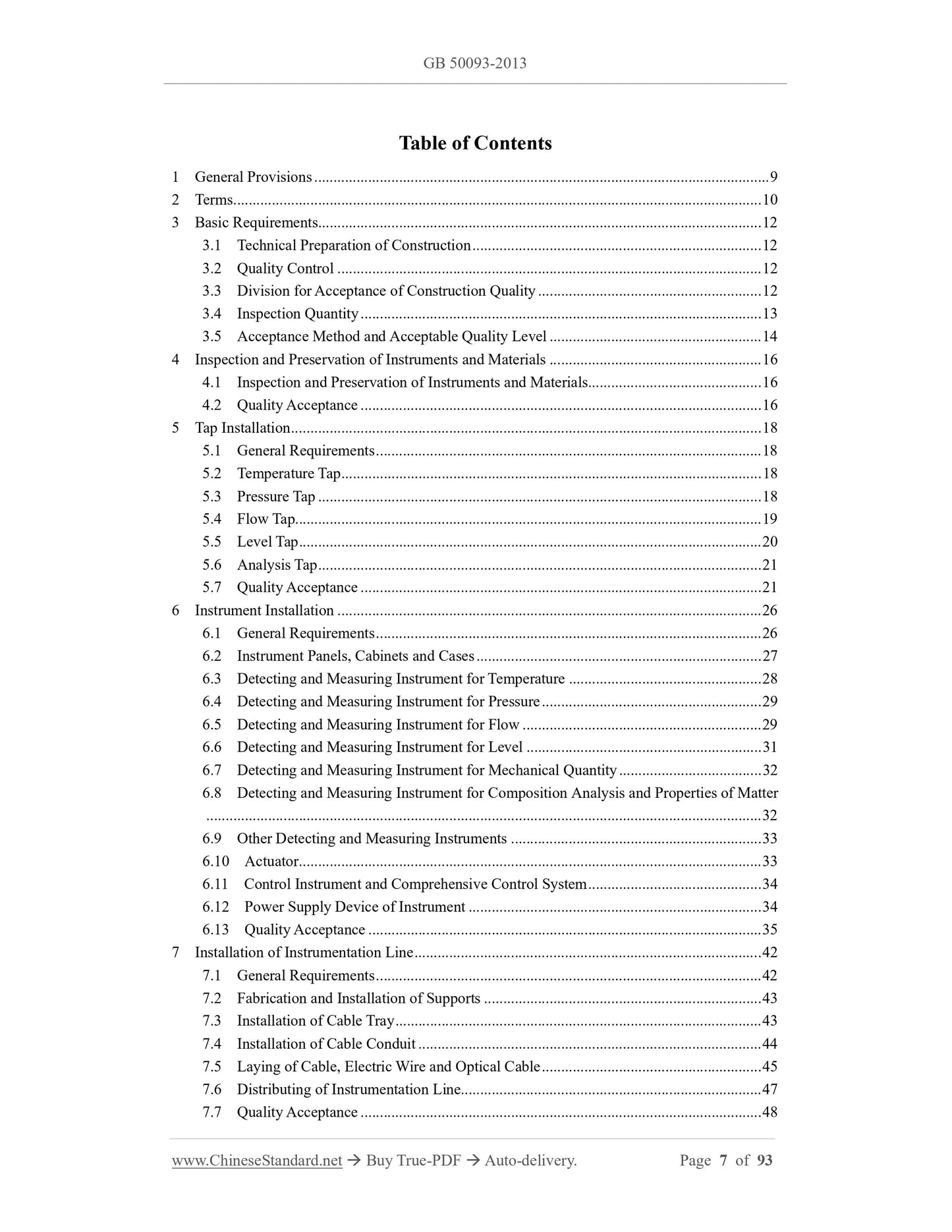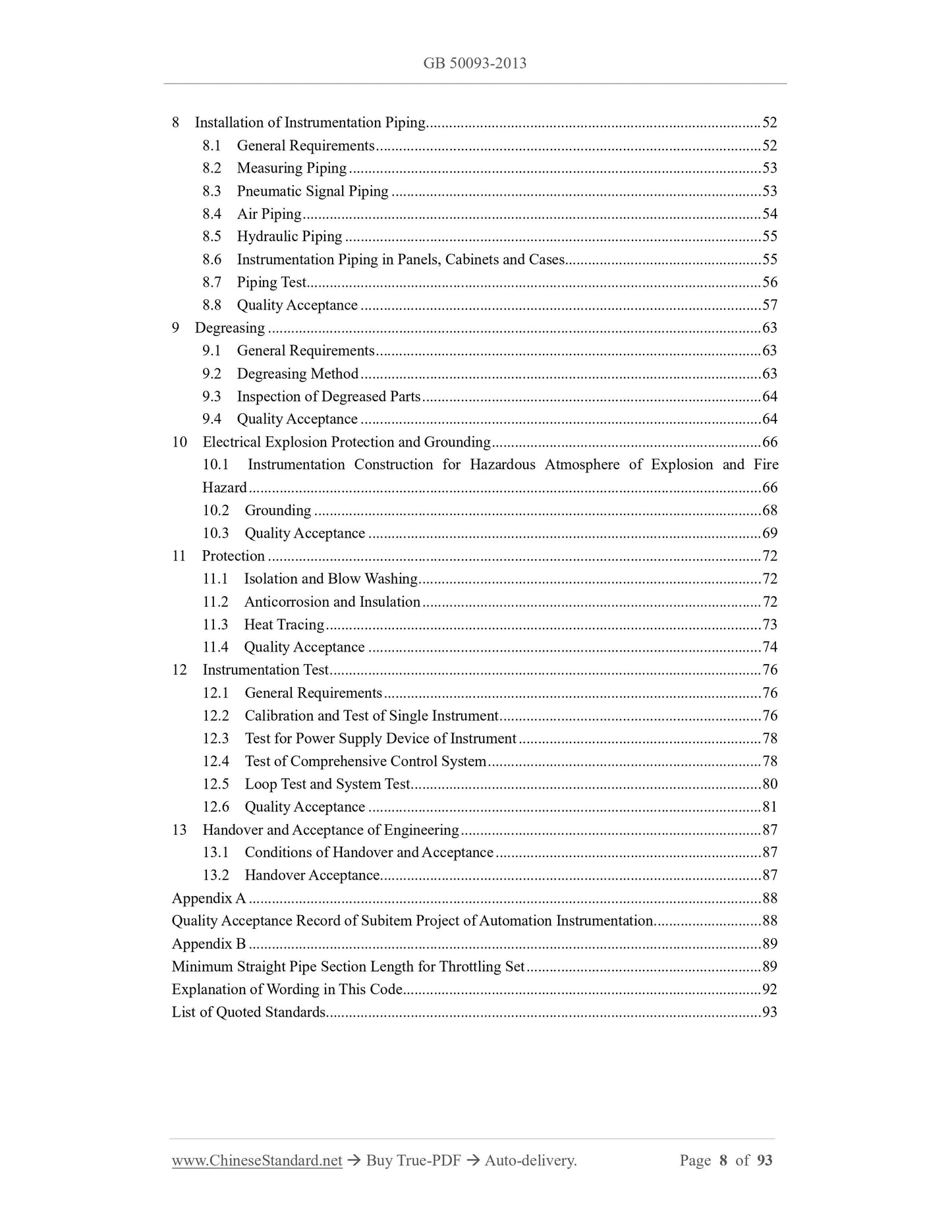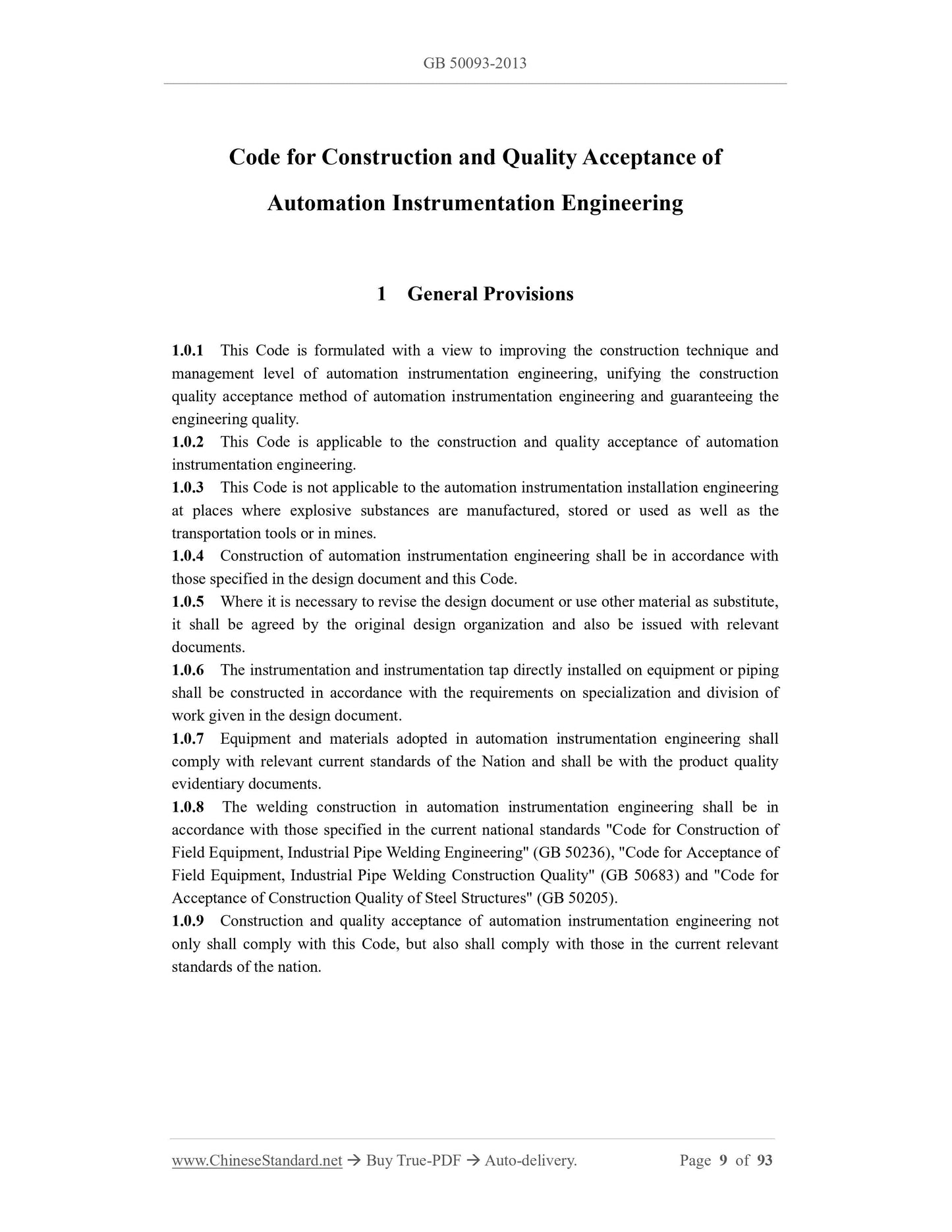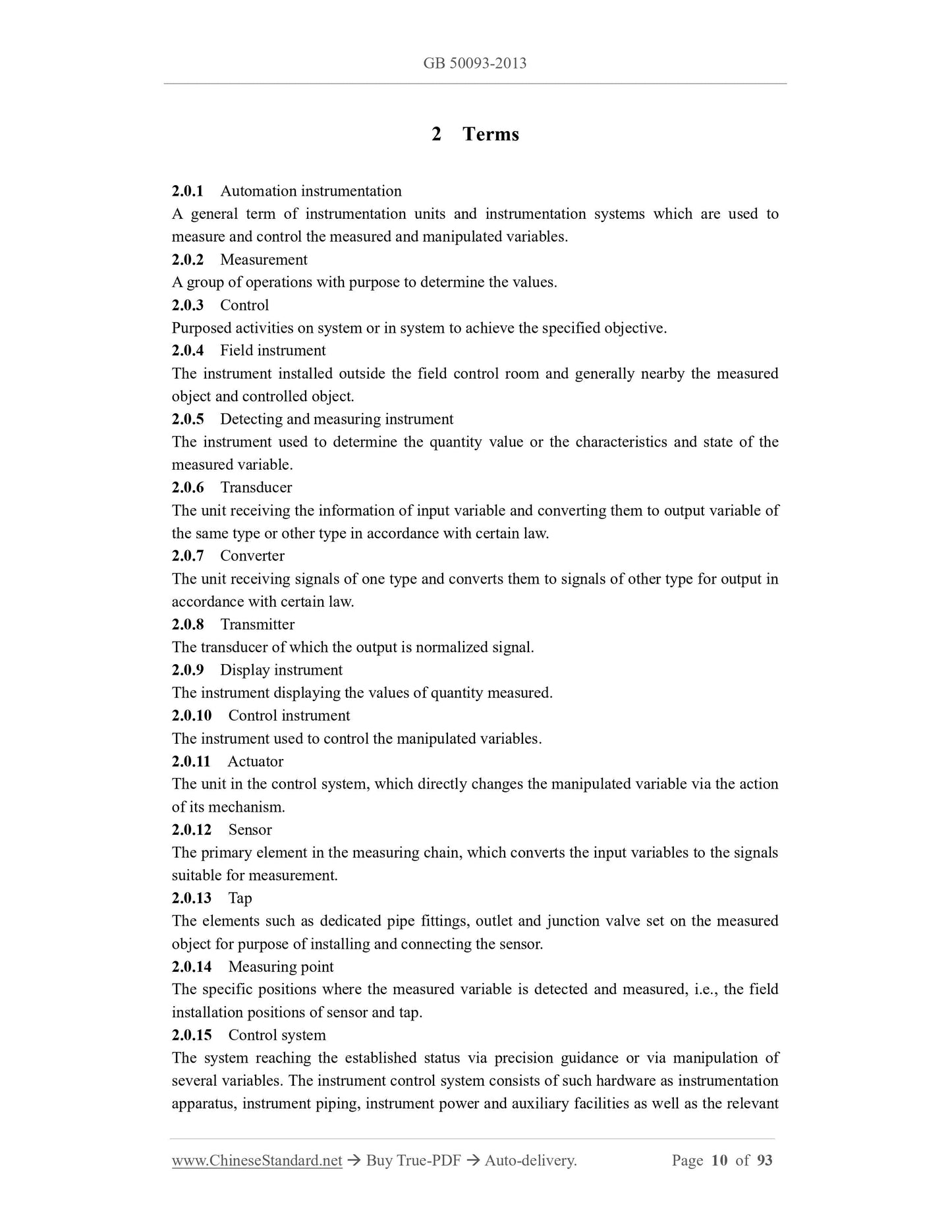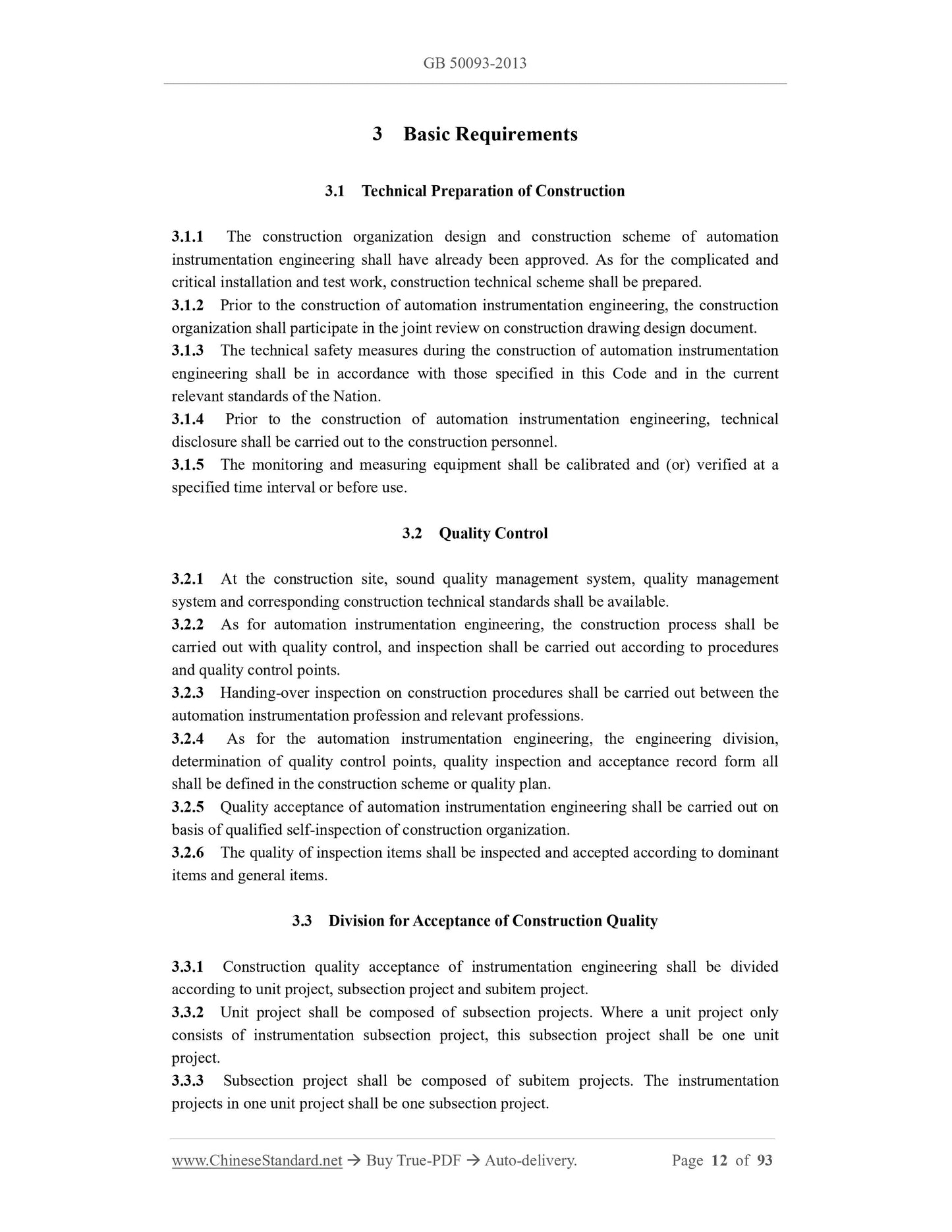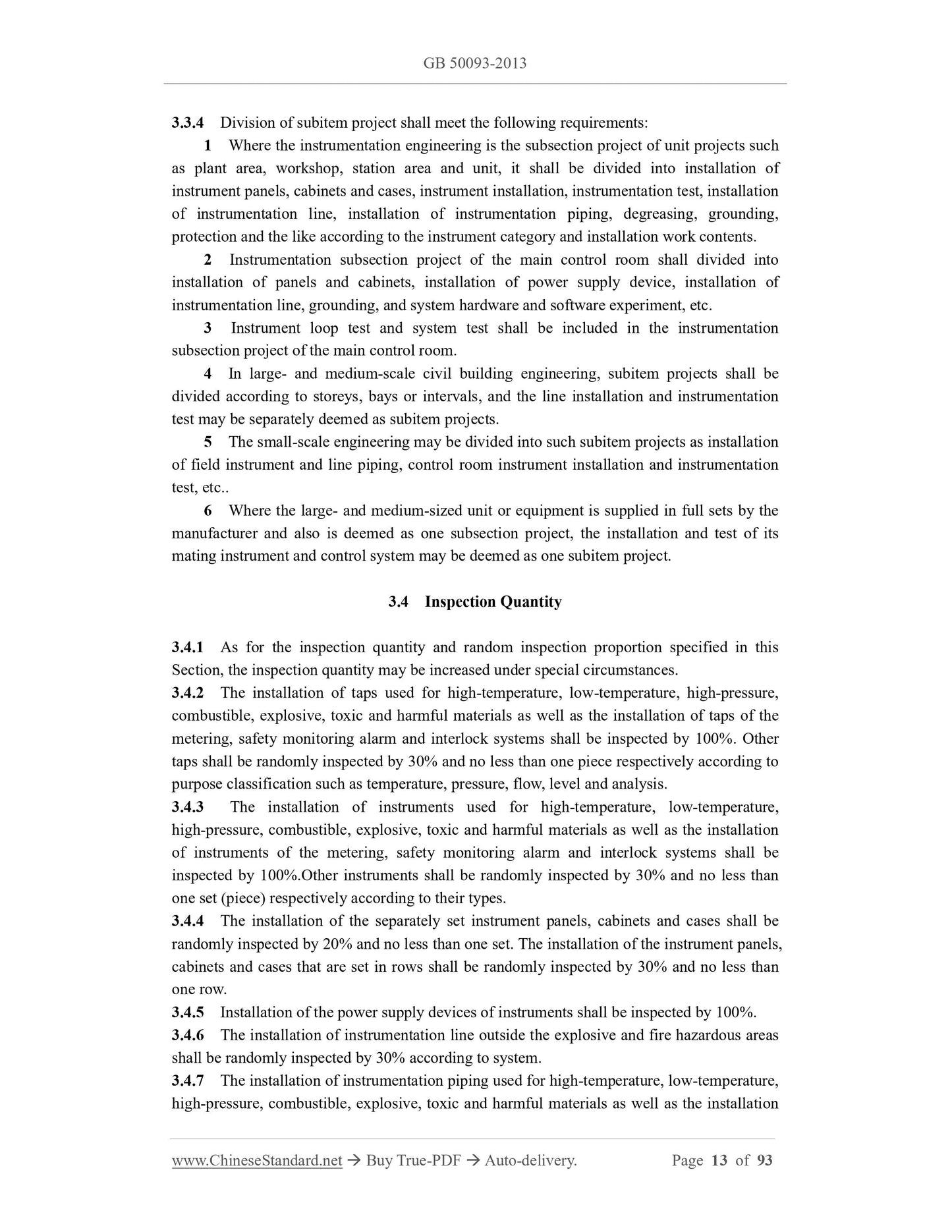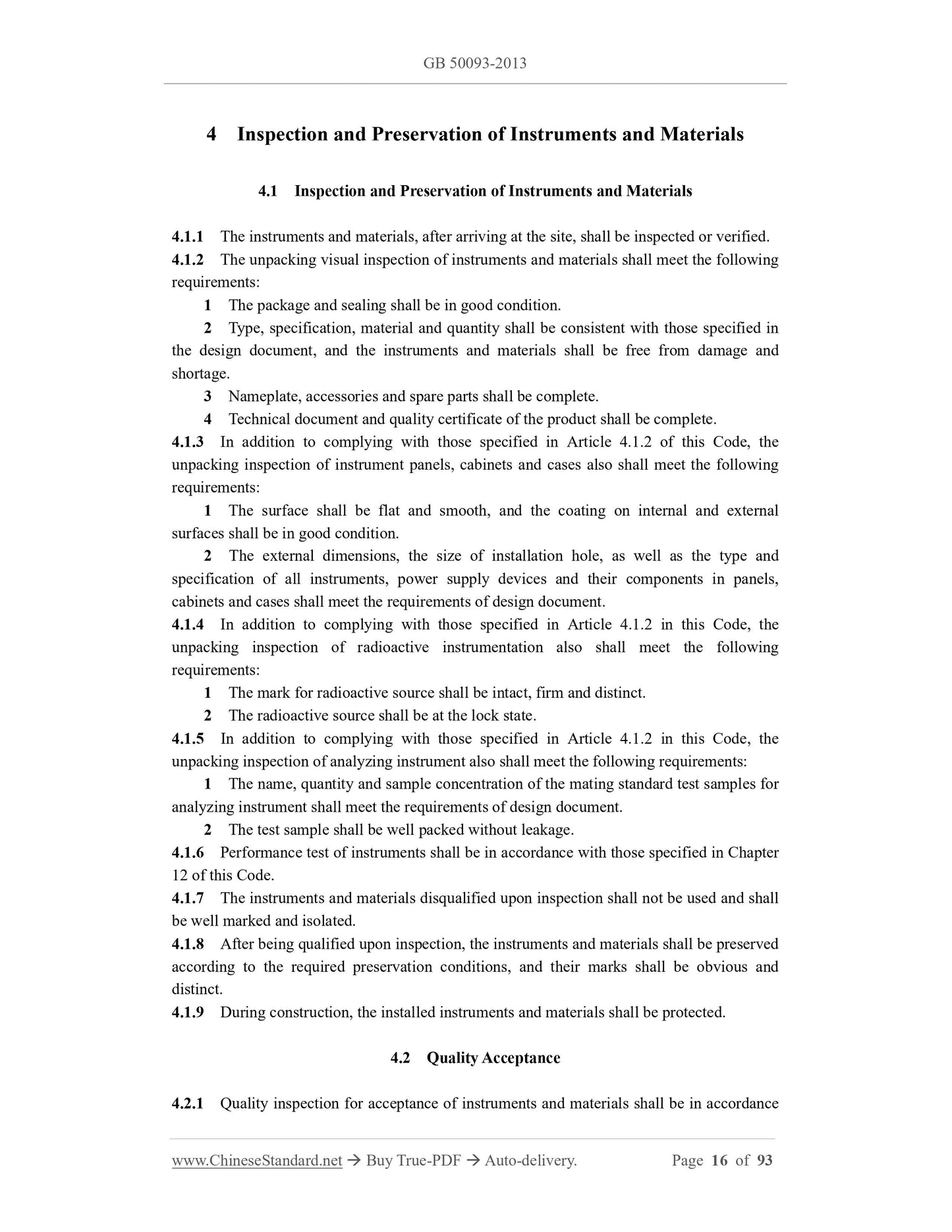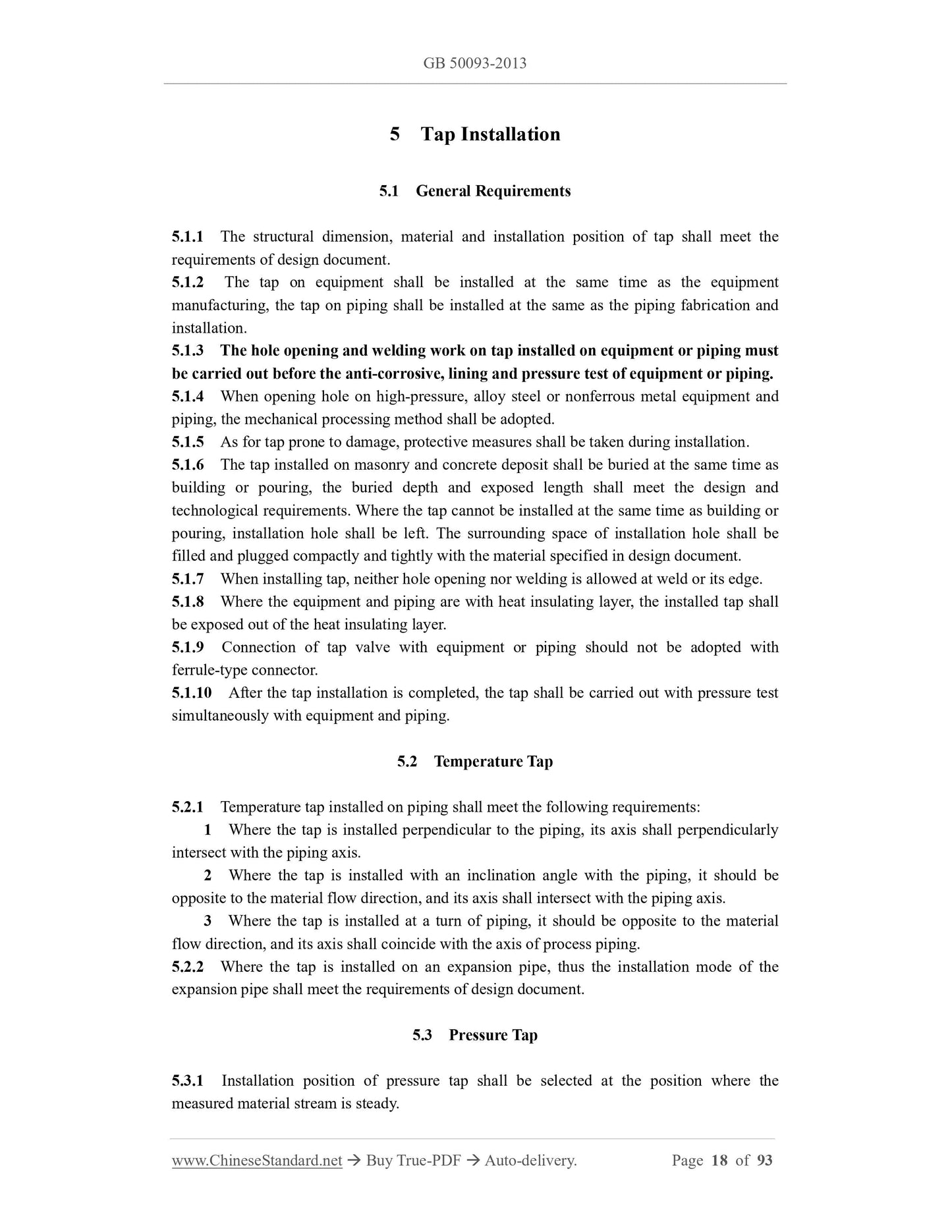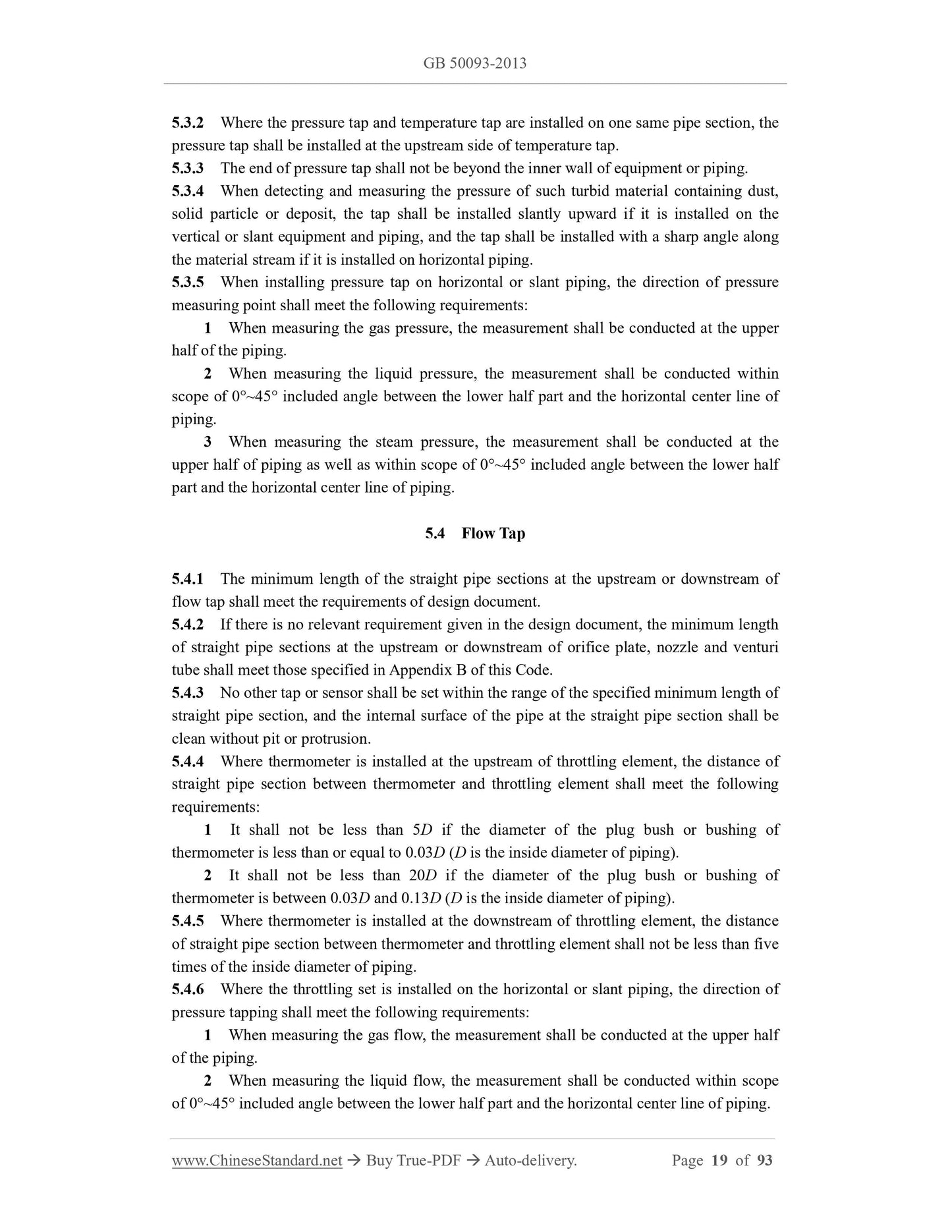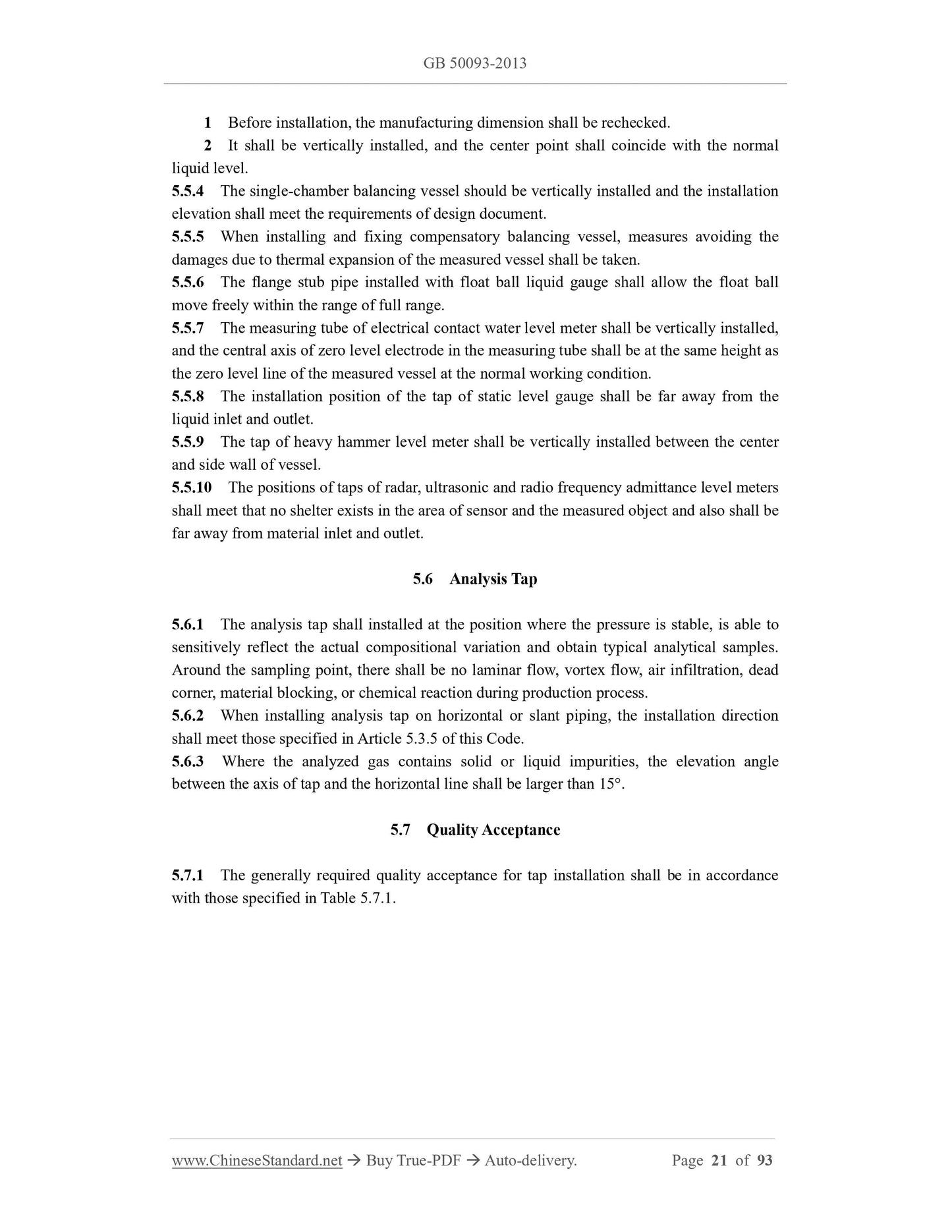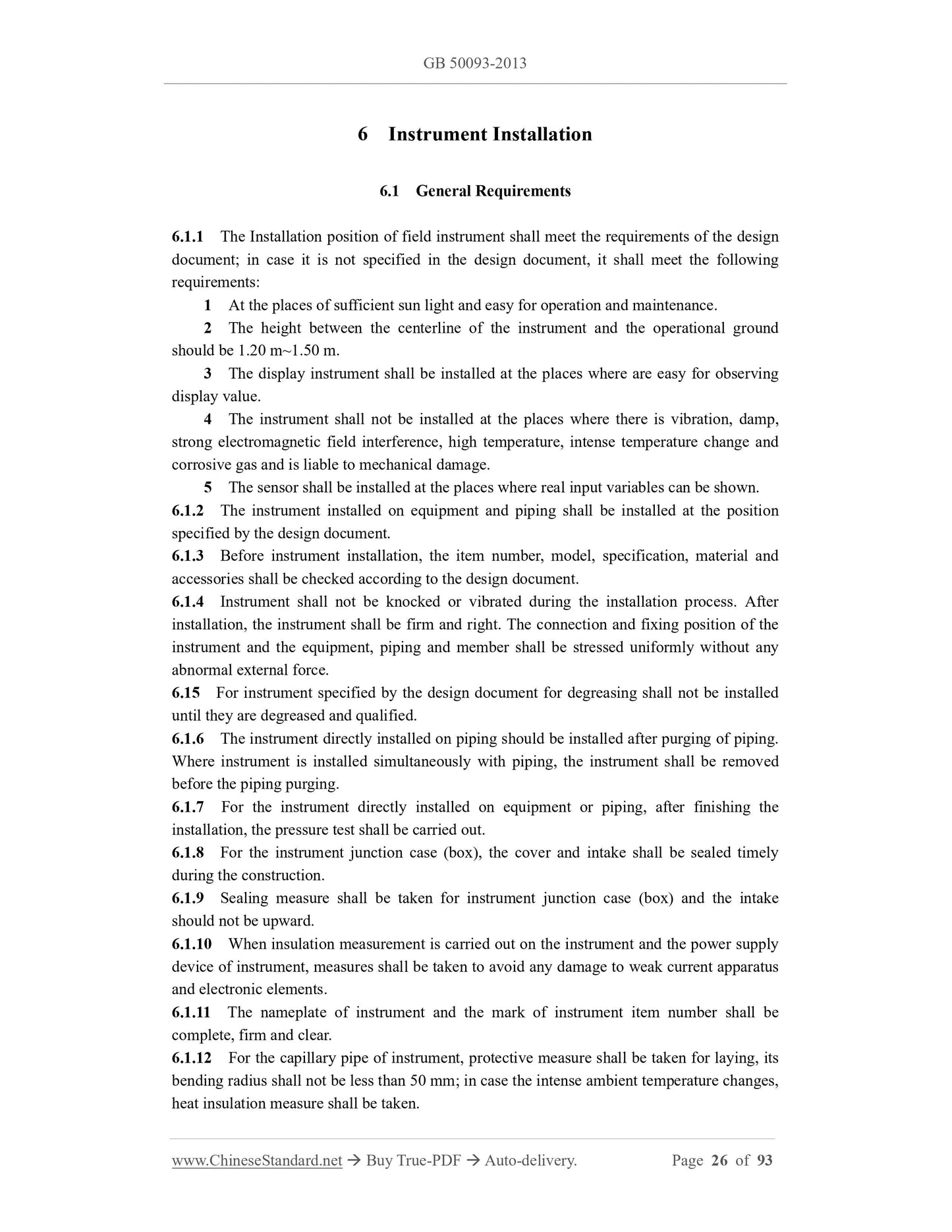1
/
of
12
www.ChineseStandard.us -- Field Test Asia Pte. Ltd.
GB 50093-2013 English PDF
GB 50093-2013 English PDF
Regular price
$355.00
Regular price
Sale price
$355.00
Unit price
/
per
Shipping calculated at checkout.
Couldn't load pickup availability
GB 50093-2013: Code for construction and quality acceptance of automation instrumentation engineering
Delivery: 9 seconds. Download (and Email) true-PDF + Invoice.Get Quotation: Click GB 50093-2013 (Self-service in 1-minute)
Newer / historical versions: GB 50093-2013
Preview True-PDF
Scope
1.0.1 This Code is formulated with a view to improving the construction technique andmanagement level of automation instrumentation engineering, unifying the construction
quality acceptance method of automation instrumentation engineering and guaranteeing the
engineering quality.
1.0.2 This Code is applicable to the construction and quality acceptance of automation
instrumentation engineering.
1.0.3 This Code is not applicable to the automation instrumentation installation engineering
at places where explosive substances are manufactured, stored or used as well as the
transportation tools or in mines.
1.0.4 Construction of automation instrumentation engineering shall be in accordance with
those specified in the design document and this Code.
1.0.5 Where it is necessary to revise the design document or use other material as substitute,
it shall be agreed by the original design organization and also be issued with relevant
documents.
1.0.6 The instrumentation and instrumentation tap directly installed on equipment or piping
shall be constructed in accordance with the requirements on specialization and division of
work given in the design document.
1.0.7 Equipment and materials adopted in automation instrumentation engineering shall
comply with relevant current standards of the Nation and shall be with the product quality
evidentiary documents.
1.0.8 The welding construction in automation instrumentation engineering shall be in
accordance with those specified in the current national standards "Code for Construction of
Field Equipment, Industrial Pipe Welding Engineering" (GB 50236), "Code for Acceptance of
Field Equipment, Industrial Pipe Welding Construction Quality" (GB 50683) and "Code for
Acceptance of Construction Quality of Steel Structures" (GB 50205).
1.0.9 Construction and quality acceptance of automation instrumentation engineering not
only shall comply with this Code, but also shall comply with those in the current relevant
standards of the nation.
Basic Data
| Standard ID | GB 50093-2013 (GB50093-2013) |
| Description (Translated English) | Code for construction and quality acceptance of automation instrumentation engineering |
| Sector / Industry | National Standard |
| Classification of Chinese Standard | P91 |
| Classification of International Standard | 29.020 |
| Word Count Estimation | 161,135 |
| Older Standard (superseded by this standard) | GB 50093-2002; GB 50131-2007 |
| Quoted Standard | GB 50126; GB 50168; GB 50205; GB 50235; GB 50236; GB 50252; GB 50257; GB 50575; GB 50683 |
| Regulation (derived from) | Ministry of Housing and Urban-Rural Development Announcement No. 1630 |
| Issuing agency(ies) | Ministry of Housing and Urban-Rural Development of the People's Republic of China; General Administration of Quality Supervision, Inspection and Quarantine of the People's Republic of China |
| Summary | This standard applies to the quality of construction and acceptance of automation instrumentation engineering. This specification does not apply to the manufacture, storage, using explosive substances places and transport, underground mine and other autom |
Share
